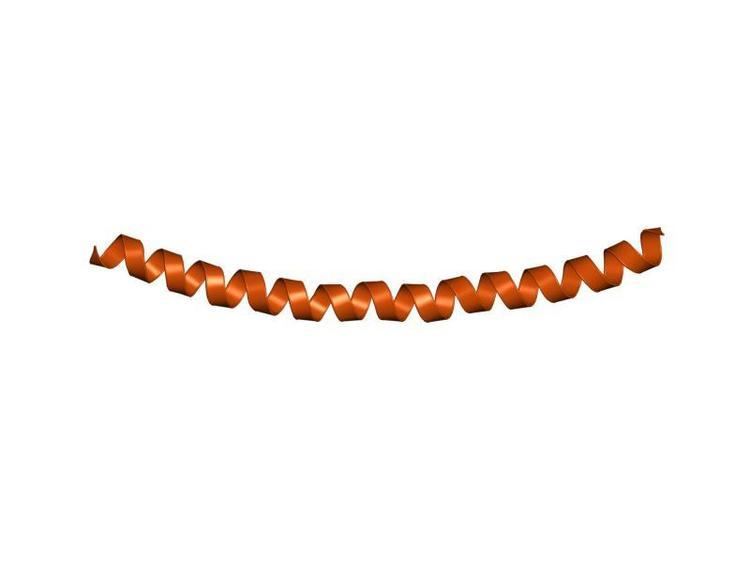Symbol Phage_Coat_Gp8 Pfam clan CL0371 SCOP 1fdm | Pfam PF05371 InterPro IPR008020 SUPERFAMILY 1fdm | |
 | ||
In molecular biology, a phage major coat protein is an alpha-helical protein that forms a viral envelope of filamentous bacteriophages. These bacteriophages are flexible rods, about one to two micrometres long and six nm in diameter, with a helical shell of protein subunits surrounding a DNA core. The approximately 50-residue subunit of the major coat protein is largely alpha-helix, and the axis of the alpha-helix makes a small angle with the axis of the virion. The protein shell can be considered in three sections: the outer surface, occupied by the N-terminal region of the subunit and rich in acidic residues that give the virion a low isoelectric point; the interior of the shell (including a 19-residue stretch of apolar side-chains) where protein subunits interact, mainly with each other; and the inner surface (occupied by the C-terminal region of the subunit), rich in positively charged residues that interact with the DNA core.
